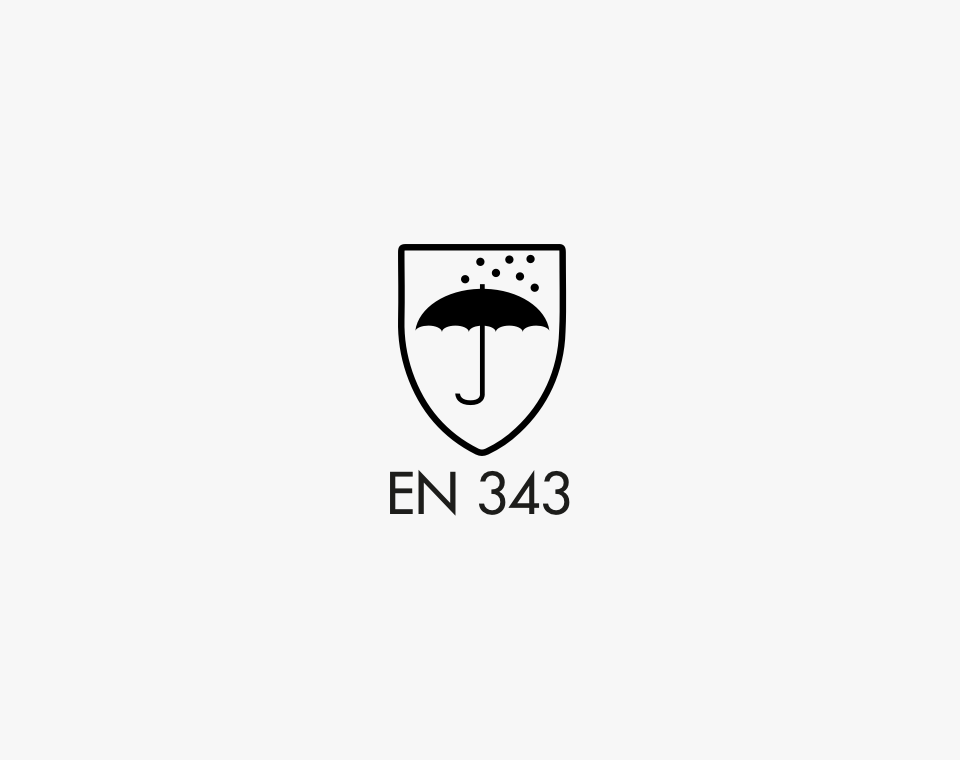
European standard EN 343 specifies the material and seam requirements for protective clothing against adverse weather conditions (rain or snow), fog or ground humidity
X: Resistance to water penetration (waterproofness) – class 1 to 3
Resistance to water penetration measures waterproofness, an essential factor in guaranteeing excellent protection. It corresponds to the hydrostatic pressure, expressed in kPa (kilopascals), with which the material resists the passage of water.
Materials are tested before and after pre-treatment, which includes: wash/dry (5 cycles); abrasion resistance, influence of petrol and oil, repeated bending.
Y: Evaporative resistance (breathability) – class 1 to 3
Evaporative resistance measures the fabric’s ability to evacuate water vapour from the wearer, essentially through perspiration. Test results are expressed in m2.Pa/W. The higher this resistance, the more the garment hinders the evacuation of perspiration that accumulates on the body. The best index (3) is therefore obtained for the most breathable materials with low resistance values (≤20).
Beyond comfort, evaporative resistance will determine the maximum continuous wear time depending on temperature. In effect, the more perspiration accumulates in cold conditions, the faster the wearer is likely to cool down. In hot conditions, an accumulation of perspiration leads to a higher heart rate and the risk of heat stress.
The other properties tested by the standard are: